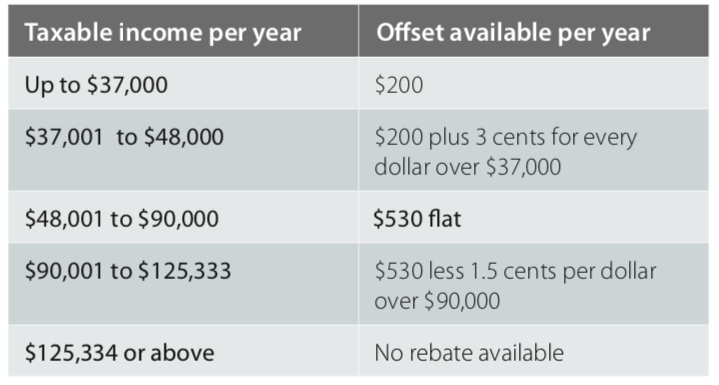How will the Budget affect you?
This year’s Federal Budget is an ‘election budget’ with tax cuts for all Australians that will be funded by the Government’s higher than expected revenue.
All-in-all, changes to super were fairly limited in the Budget, with the Government focused on preventing the erosion of super funds with small balances.
Some of the key points from the Budget are below, but remember these are subject to the passing of legislation:
- A new tax offset for low and middle-income earners, up to $530 per year.
- Super accounts with small balances will have more protection from fee erosion and unnecessary insurance premiums.
- People receiving the Age Pension will be able to earn up to $300 per fortnight without it affecting the amount of their Age Pension.
- More aged care places to assist older Australians.
Taxation
Changes to the marginal tax rate
From 1 July 2018, the 32.5% upper threshold is proposed to increase from $87,000 to $90,000. This would increase to $120,000 from 1 July 2022, before increasing again to $200,000 from 1 July 2024.
According to the Treasury, this will mean that when these increases are implemented and combined with the tax offset, 94% of taxpayers will be on a marginal tax rate of 32.5%.
Low and middle-income tax offset
The Government will also introduce the low and middle income
The offset will be based on your income as shown in the following table:

This will be paid in addition to the current $445 Low Income Tax Offset.
Business taxation
You will continue to be able to write off business assets of up to $20,000 until 30 June 2019. This measure was due to expire at 30 June this year.
To crack down on the black economy – which is when cash is used to make payments so tax can be avoided – from 1 July 2019, payments in cash for goods and services over $10,000 will be banned. From the same date, business owners will no longer be able to make tax deductions where they have not withheld any amount of PAYG in their staff payments, or where a contractor does not supply an ABN.
Tax integrity
From 1 July 2019, you will no longer be able to claim a tax deduction on vacant land.
Superannuation
Protecting your super
From 1 July 2019, exit fees will be banned on all super accounts, regardless of the balance, making it easier to consolidate multiple accounts. For accounts with a balance of under $6,000, fees will be capped at 3% or $90 per six months.
People who have accounts with a balance of under $6,000 and have been inactive for more than 13 months, will have their account balances automatically transferred to the ATO who will then ‘proactively’ merge this balance with active accounts that have a balance over $6,000.
Automatic insurance cover will be banned for new accounts where the member is under age 25, for accounts under $6,000 and where accounts have been inactive for 13 months.
Self-managed super funds
From 1 July 2019, self-managed super funds (SMSFs) and small APRA funds (SAFs) will be able to increase the number of members from four to six. SMSFs who have clear audit reports for three consecutive years will be able to move to a three-year audit cycle.
Work test
From 1 July 2019, members aged between 65 and 74 who have super balances below $300,000 will be able to make voluntary contributions in the first year that they do not meet the work test requirements.
Social security
Increase to the Pension Work Bonus
Under the Pension Work Bonus scheme if you receive the Age Pension or the Veterans’ Affairs Pension you will be able to earn up to $300 per fortnight, up from the current level of $250 without it affecting your pension. The scheme will also be expanded to include the self-employed. This scheme will not apply to income associated with financial or real estate investments.
Expansion of the Pension Loans Scheme
Currently, the Government offers a reverse mortgage through the Pension Loans Scheme (PLS) to part pensioners and some nil-rate pensioners to allow them to ‘top up’ their Age Pension to the maximum rate.
From 1 July 2019, full-rate pensioners will be able to increase their income by up to $11,799 (singles) or $17,787 (couples) per year and the maximum allowable combined Age Pension and PLS income stream will be increased to 150% of the Age Pension rate.
The current PLS interest rate of 5.25% per year will apply to existing and new loans. The loan amounts will accumulate as a debt to the Government. The debt is repaid when the house is sold or it can be repaid any time before.
Carer Allowance — now means tested
The Government will introduce a $250,000 family income test threshold to the Carer Allowance payment. The Carer Allowance is currently not means tested.
Aged Care
An additional 14,000 high-level home care support packages will be introduced during the next four years to assist older Australians with tasks such as cooking and transportation.
Combine Residential Care and Home Care programs
From 1 July 2018, the Government will combine the Residential Care and Home Care programs. This will provide greater flexibility for people when choosing a mix of home care and residential aged care places.
Additional residential aged care places
The Government will release 13,500 residential aged care places and 775 short-term restorative care places.
